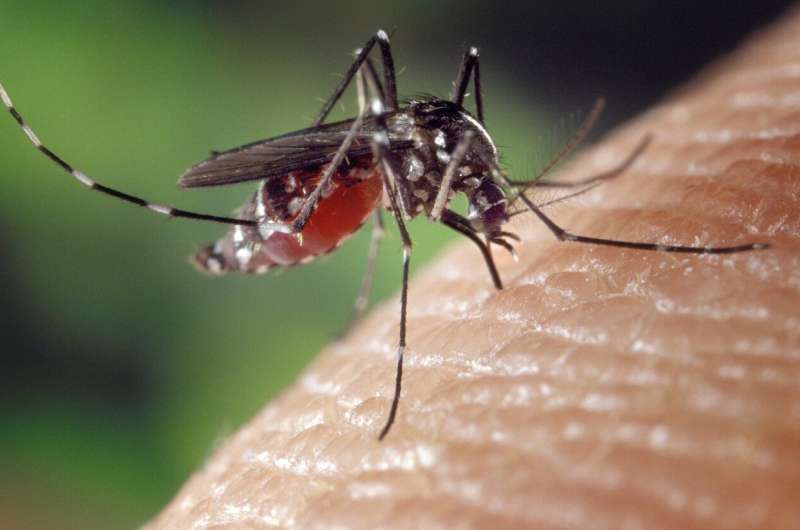This article has been reviewed according to Science X's editorial process and policies. Editors have highlighted the following attributes while ensuring the content's credibility:
fact-checked
peer-reviewed publication
trusted source
proofread
Climate change portends wider malaria risk as mosquitoes spread south and to higher elevations in Africa

Based on data that span the past 120 years, scientists at Georgetown University Medical Center have found that the mosquitoes responsible for transmitting malaria in Africa are spreading deeper into southern Africa and to higher elevations than previously recorded. The researchers estimate that Anopheles mosquito populations in sub-Saharan Africa have gained an average of 6.5 meters (21 feet) of elevation per year, and the southern limits of their ranges moved south of the equator by 4.7 kilometers (nearly 3 miles) per year.
The researchers' study appeared February 15, 2023, in Biology Letters.
"This is exactly what we would expect to see if climate change is helping these species reach colder parts of the continent," says Colin Carlson, Ph.D., an assistant research professor at the Center for Global Health Science and Security at Georgetown University Medical Center and lead author of the study. "If mosquitoes are spreading into these areas for the first time, it might help explain some recent changes in malaria transmission that have otherwise been hard to trace back to climate."
The world is at least 1.2 degrees Celsius (about 2 degrees Fahrenheit) warmer than in the pre-industrial period. In 2011, scientists estimated that earth-bound species were moving uphill at a rate of 1.1 meters per year, and to more polar latitudes at 1.7 kilometers per year, making the movement of mosquitoes a relatively fast shift by comparison.
The investigators focused on mosquitoes in the genus Anopheles both because of their ability to spread malaria, and because of a unique historical dataset tracking their movements. Carlson notes that other species are probably moving in similar ways, but that future research efforts will have to get a sense of what's happening in different regions or with different diseases to gain the most comprehensive picture possible.
"We tend to assume that these shifts are happening all around us, but the evidence base is fairly limited," says Carlson. "If we're reimagining bio-surveillance for life on a hotter planet, a big part of that is going to have to be keeping an eye on animal movement."
Carlson notes that his team has been learning a lot about long-term biodiversity change thanks to deep historical public health records. "We know so little about how climate change is affecting invertebrate biodiversity. Public health is giving us a rare window into how some insects might be thriving in a changing climate—even if it's bad news for humans."
More information: Rapid range shifts in African Anopheles mosquitoes over the last century, Biology Letters (2023). DOI: 10.1098/rsbl.2022.0365. royalsocietypublishing.org/doi … .1098/rsbl.2022.0365
Journal information: Biology Letters
Provided by Georgetown University Medical Center

















